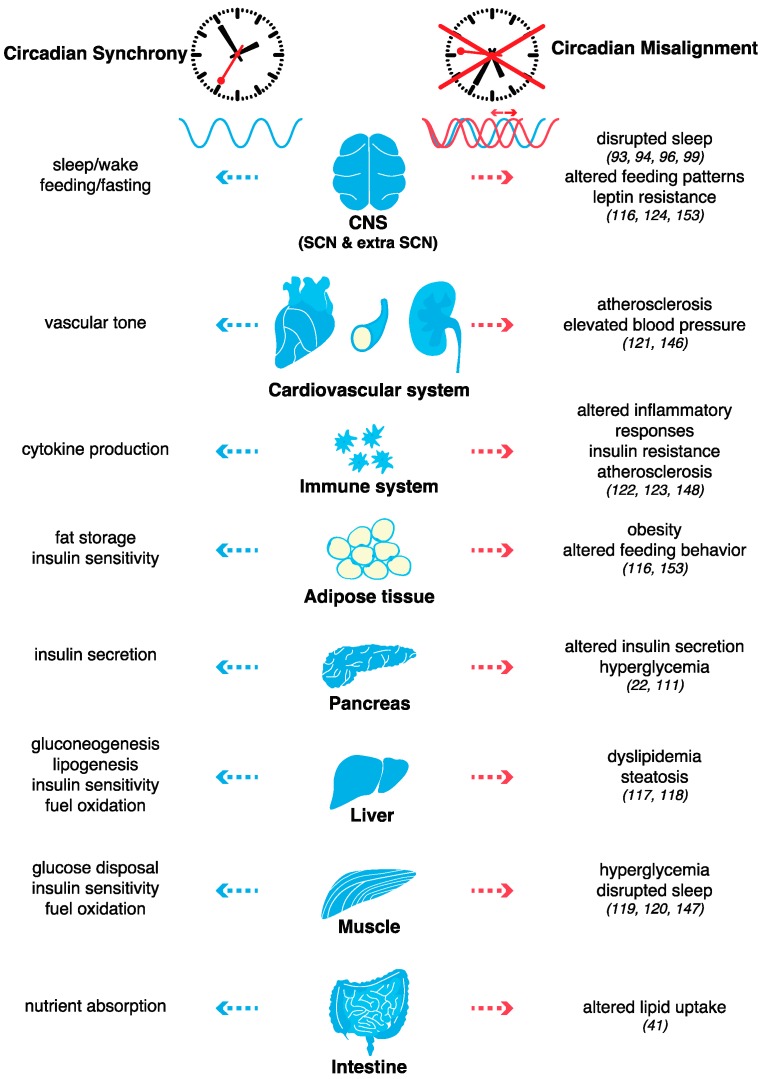Figure 3.
From circadian synchrony in physiological processes to circadian disruption in metabolic diseases. In mammals, circadian clocks are found in all major organ and tissues. The mammalian circadian pacemaker is located in the suprachiasmatic nucleus (SCN) of the hypothalamus. The SCN coordinates all of the cell autonomous oscillations in the peripheral tissues to maintain robustly rhythmic behavioral and physiological phenotypes. The coordination between behavioral (i.e., sleep–wake, feeding–fasting) and metabolic responses with the light/dark cycle involves the autonomic innervation and/or endocrine signals. During circadian misalignment induced by chronic jet lag, irregular eating times, high-fat feeding, abnormal sleep patterns, the peripheral tissues and the brain fail to receive the appropriate signals at the optimal time of the day, thereby potentiating the development of metabolic diseases. The main references (studies in mice and/or humans) are indicated.

